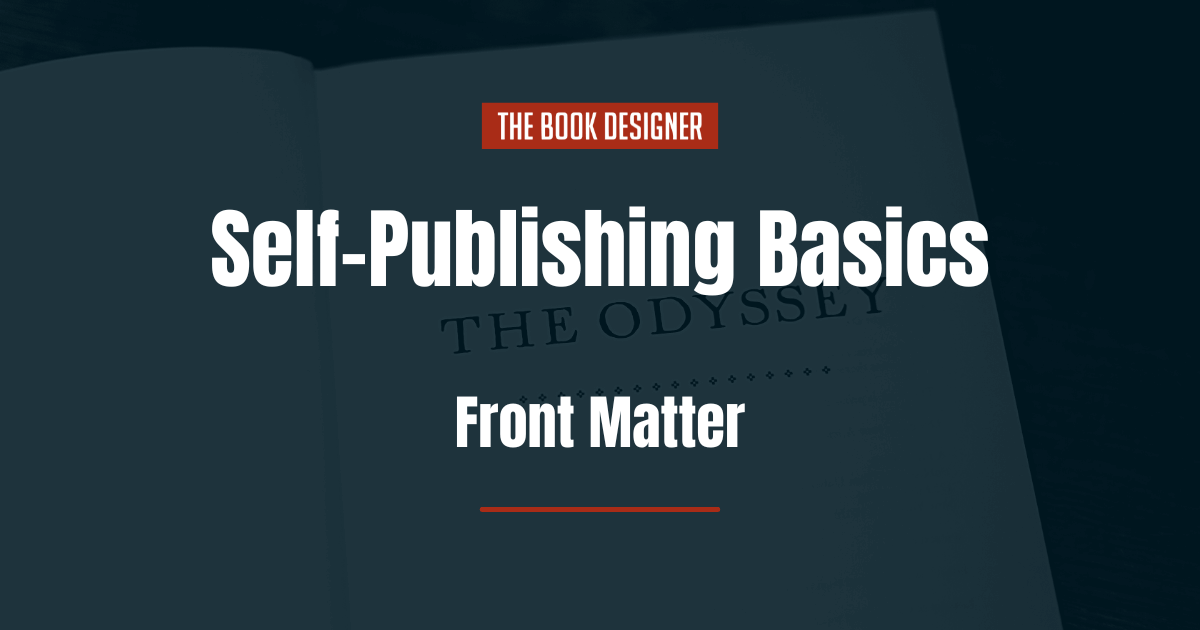Embarking on the journey of self-publishing a book can be a revelation for many writers. It’s a path that transforms a manuscript—a labor of love often years in the making—into a published book. This transformation introduces authors to the intricacies of the parts of a book, including the critical elements of front matter and back matter. Understanding these components is essential in creating a book that resonates with readers and meets publishing standards.
Below, we’ll cover everything you need to know about the front matter of a book:
The Significance of Front Matter
The term “front matter” refers to the sections at the beginning of a book, preceding the main content or body. It is a fundamental part of a book’s structure, distinct from the back matter which typically includes indexes, glossaries, and notes. The front matter serves as a guide, providing the reader with initial information and context about the book. It sets the tone for what’s to come and is crucial in making a strong first impression.
Customization for Genre and Audience
Different genres and target audiences may require different approaches to front matter. For instance, academic books might have extensive lists of figures and tables, while a novel might focus more on a poignant dedication or an engaging epigraph. Understanding your audience and genre can help tailor the front matter appropriately.
The Components of a Book’s Front Matter
The Role of the Half Title Page
The half title page, though simple, serves a crucial function. It’s the reader’s first encounter with your book, setting the tone for what’s to follow. Its minimalistic nature – often just the book title – focuses the reader’s attention and builds anticipation. In some instances, this page is omitted, especially in shorter publications, to manage the overall length of the book.
The Artistic Touch of the Frontispiece
The frontispiece, often overlooked, provides an opportunity for artistic expression. This illustration, facing the title page, can be thematic, setting the mood, or informative, offering insight into the book’s content or theme. The choice of artwork here can subtly influence the reader’s perception of the book.
Crafting an Engaging Title Page
The title page is more than just informational; it’s a branding opportunity. It conveys not just the title but also the author’s name and the publisher’s details. The design of this page, including any illustrations, fonts, and layout, contributes to the book’s identity and can be a critical factor in attracting readers.
Navigating Legalities on the Copyright Page
The copyright page is where legalities come into play. This includes the copyright notice, edition details, publication data, and the book’s ISBN. It’s also a space for acknowledging the contributions of designers, editors, and illustrators. This page is a necessary component for protecting your rights as an author and acknowledging those who helped bring your book to fruition.
Personal Touches: Dedication and Epigraph
The dedication and epigraph offer a personal touch. A dedication is a heartfelt way to recognize someone significant to the author or the book’s creation. The epigraph, a strategically chosen quotation, can set the thematic stage for the book or a specific section, providing readers with a glimpse into the author’s mindset or the book’s tone.
Organizing with the Table of Contents
The table of contents is a navigational tool. It outlines the book’s structure, listing chapters and parts. Its clarity and accuracy are essential for the reader’s ease of use, especially in longer works. This element is not just functional but also an integral part of the overall design, contributing to the user experience.
Lists of Figures and Tables: Enhancing Clarity
In books heavy on data, illustrations, or complex concepts, lists of figures and tables are invaluable. They aid readers in finding specific information quickly and can enhance the book’s usability, particularly in academic or technical publications.
Foreword, Preface, and Introduction: Setting the Stage
The foreword, preface, and introduction each play unique roles. The foreword, often penned by someone other than the author, lends credibility and context. The preface, written by the author, shares the book’s backstory or the author’s journey in writing it. The introduction, meanwhile, outlines the book’s aims, scope, and structure, preparing the reader for what lies ahead.
Acknowledgments: Expressing Gratitude
Acknowledgments are where authors express gratitude. This section is a chance to thank those who contributed to the book’s creation, offering insights into the collaborative nature of publishing.
The Prologue: A Fiction Essential
In fiction, the Prologue sets the narrative scene. Written in a character’s voice, it provides a sneak peek into the story’s world, creating intrigue and setting the stage for the main narrative.
Second Half Title: A Transitional Element
The second half title, used in books with extensive front matter, acts as a transition. It signals the end of the preliminary sections and the start of the main content. This element can be particularly effective in creating a clear demarcation for the reader.
Pagination of the Front Matter: A Crucial Aspect
The pagination in the front matter of a book differs from the rest of the book. Traditionally, Roman numerals are used to number these preliminary pages. This style distinguishes the front matter from the main text, which is usually numbered with Arabic numerals.
Why Use Roman Numerals?
The use of Roman numerals in the front matter serves a practical purpose, especially in indexed books. Suppose you receive a last-minute foreword or dedication to include in your book. If the front matter is paginated with Roman numerals, inserting these additional pages won’t disrupt the pagination of the main text. This is crucial because any change in the page numbers of the main text could necessitate a complete revision of the index, a labor-intensive process.
Flexibility for Authors
While Roman numerals are a traditional choice, authors have flexibility, especially in non-indexed books or digital formats. In cases where a book doesn’t require strict adherence to pagination for indexing, authors can choose a style that best suits their book and audience. This can include continuing the Arabic numeral sequence from the main text or devising a unique numbering system.
Digital Books and Pagination
In eBooks, pagination can be dynamic due to varying screen sizes and user settings. However, maintaining a clear and consistent presentation of the front matter is still important for reader orientation.
More Practical Tips for Authors
Balancing Content
It’s crucial to balance the amount of front matter. Too much can overwhelm the reader, while too little may seem inadequate. The key is to include elements that add value and relevance to your specific book.
Consistency in Design
The design elements in the front matter should be consistent with the rest of the book. This consistency helps in establishing a professional look and feel.
Considerations for Digital Formats
In eBooks, the functionality of the front matter can differ. Hyperlinked tables of contents and easily navigable sections become more important.
Professional Assistance
For authors who find the task daunting, professional publishing services can provide valuable assistance in organizing and designing the front matter, ensuring it aligns with industry standards and enhances the overall quality of the book.
Final Tips for Authors
For aspiring authors, understanding and thoughtfully organizing the front matter is crucial. Each element should be considered not just for its traditional role but for how it contributes to the book’s overall narrative and presentation. Remember, the front matter is your first opportunity to engage with your readers, and making a strong impression here can have a lasting impact on their reading experience.
Regardless of whether you choose to manage the front matter yourself or seek professional assistance, the goal remains the same: to create a cohesive, engaging, and professional presentation that resonates with your audience.




